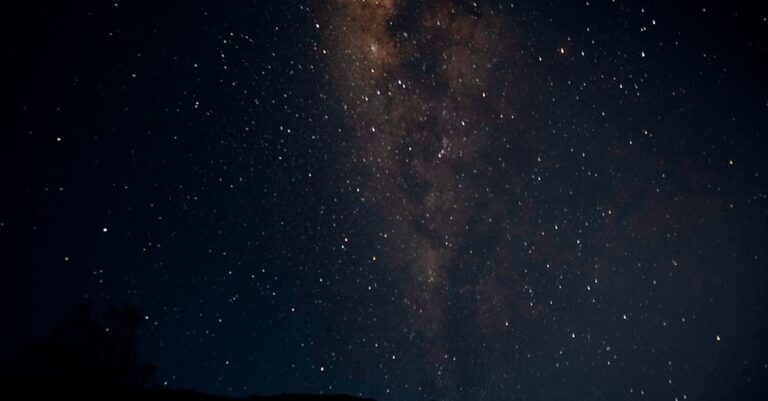Capturing that perfect moment on an iPhone can feel like chasing a unicorn. One minute it’s all smiles and sunshine, and the next, it’s a blurry mess of chaos. But fear not! Mastering shutter speed can transform those fleeting seconds into frame-worthy memories.
Table of Contents
ToggleUnderstanding Shutter Speed
Shutter speed plays a crucial role in photography. It determines how long the camera’s sensor is exposed to light, influencing the overall image quality.
What Is Shutter Speed?
Shutter speed refers to the amount of time that the camera’s shutter remains open. Measured in seconds or fractions of a second, it can range from very slow speeds like 1 second to extremely fast speeds such as 1/8000 of a second. A slower shutter speed allows more light to hit the sensor, useful in low-light conditions. In contrast, a faster shutter speed captures quick movements, freezing action for sharp images.
Importance of Shutter Speed in Photography
Shutter speed significantly affects photo clarity and artistic expression. A proper shutter speed prevents motion blur when capturing fast-moving subjects like athletes. Creative effects can be achieved using slower speeds, showcasing movement through blur, known as motion blur. They allow photographers to highlight dynamic scenes or create a sense of speed. Adjusting shutter speed ensures optimal exposure, allowing photographers to capture vivid colors and fine details.
How to Access Camera Settings on iPhone
Accessing the camera settings on an iPhone is straightforward and crucial for adjusting shutter speed effectively.
Using the Native Camera App
Open the native Camera app to quickly access basic camera settings. Tapping on the screen allows for focus adjustments. Swiping left or right on the mode options reveals different shooting modes. To set exposure manually, hold your finger on the screen until a sun icon appears, then slide up or down to adjust brightness. While the native app doesn’t offer a dedicated shutter speed setting, knowing how to modify exposure aids in creating desired effects.
Third-Party Camera Apps
Exploring third-party camera apps can significantly enhance photography control. Apps like ProCam or Halide provide advanced features, including manual shutter speed settings. To adjust shutter speed, select the camera settings within the app’s interface. Each app typically displays a slider or numerical indicator for precise adjustments. Opting for these specialized applications offers the flexibility needed for capturing stunning images in various conditions.
Steps to Set Shutter Speed on iPhone
Setting the shutter speed on an iPhone enhances photography capabilities. Numerous options exist for adjusting this crucial element.
Adjusting Shutter Speed in Native Camera
The iPhone’s native Camera app doesn’t provide a direct shutter speed setting. Instead, it allows users to adjust exposure for different lighting conditions. Users can tap on the screen to focus on the subject, then swipe up or down on the exposure slider to modify brightness. This method indirectly influences shutter speed by adjusting how long the sensor captures light. Experimenting with exposure settings in varied conditions can lead to better image results, especially in low-light and high-motion scenarios.
Utilizing Third-Party Apps for Shutter Speed
Third-party apps unlock more advanced photography features, including manual shutter speed control. ProCam and Halide are popular choices among photographers. These apps enable users to select specific shutter speeds ranging from fractions of a second to several seconds. Adjusting these settings helps achieve desired effects, such as motion blur or sharp action shots. Explorations with these apps can significantly enhance a photographer’s ability to capture memorable moments under diverse conditions.
Tips for Optimal Shutter Speed Settings
Mastering shutter speed enhances iPhone photography. Choosing appropriate settings impacts image quality significantly.
Choosing the Right Shutter Speed for Various Scenarios
Selecting the ideal shutter speed depends on lighting conditions and subject movement. In bright daylight, use faster shutter speeds, like 1/1000 sec, to freeze motion. For low-light situations, slower speeds, such as 1/30 sec, capture more light, but risks blurriness due to camera shake. Action shots require quick shutter speeds to prevent motion blur, while longer exposures can create artistic effects like light trails. Understanding these distinctions helps capture vibrant images in diverse environments.
Common Mistakes to Avoid
Avoiding common mistakes ensures better outcomes in photography. Many enthusiasts forget to stabilize their iPhone while using slower shutter speeds, leading to unwanted blur. Neglecting to adjust exposure can wash out highlights or underexpose shadows. Relying solely on automatic settings limits creativity, so exploring manual controls is essential. Lastly, overlooking the influence of shutter speed on depth of field can result in misjudged focus, emphasizing the importance of mastering this vital setting.
Mastering shutter speed on an iPhone can significantly elevate photography skills. By understanding how shutter speed affects exposure and image quality, photographers can make informed decisions that enhance their pictures. Whether capturing fast-moving subjects or creating stunning low-light images, adjusting shutter speed is key.
Utilizing the native Camera app or exploring advanced third-party options allows users to take full control of their photography. With practice and attention to detail, anyone can transform ordinary moments into extraordinary memories. Embracing these techniques will lead to a more rewarding photography experience.




